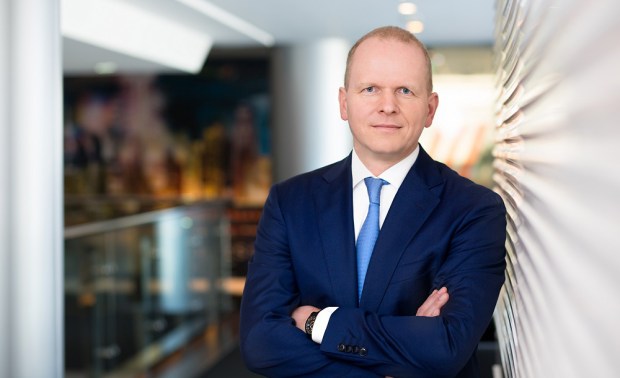Mastercard’s Miebach On 2017’s Big Payments Breakthroughs

While everyone is looking ahead to 2018, it’s worth a look back at some of the major payments milestones of 2017. For Michael Miebach, chief product officer at Mastercard, those milestones include key acquisitions and partnerships that propelled the spread of real-time payments, use of application program interfaces (APIs) and advancement of payments security. The year was shaped by a redefinition of choice in how consumers and businesses use their money, says Miebach, and continued progress in 2018 will rely on innovation and collaboration. He shares his thoughts below.
As the calendar turns to a new year, several lists and “best of” articles are often published across a number of outlets. It’s important to take stock and celebrate milestones. These moments also give us an opportunity to look ahead and think about how these efforts will set the stage for the coming year.
So, in looking back at 2017, I’m focused on what was a breakthrough and what went beyond the status quo. This year, technological breakthroughs — combined with new acquisitions and partnerships — have enabled us to redefine what’s possible in payments. At Mastercard, we are building to a future in which simplicity, experience and seamlessness are paramount.
When Worlds Converge
Today’s world requires a new way of thinking about how people interact and how they transact. No one will wake up in the morning thinking about how they want to make a payment that day. They simply are looking to make the purchases that will help add to their experiences or deliver on a goal.
That’s driving us to think about the physical and digital experience as part of a single, seamless, unified experience, whether in-store or online. Consumers and businesses alike are thinking beyond a plastic card, and that’s what has driven our efforts to deliver the best products regardless of the form that account may take.
Our acquisition of Vocalink helps us to be a stronger partner in delivering greater innovation and choice in payments. With bank- and card-based payments under one roof, we’re delivering more efficient alternatives to cash and checks for individuals, businesses and governments, and providing more real-time payment options for more people in more places.
The multiple rails of Mastercard and Vocalink are driven by great teams, great technology and a proven track record. It’s this strong foundation that will enable access across a unified network of networks.
Whether it’s the peer-to-peer (P2P), business-to-consumer (B2C) or business-to-business (B2B) opportunity, our customers and clients have the ability to start a different conversation. It’s truly about allowing people and businesses to access and use their money how they want. It’s about connecting more senders with more receivers in more ways. For us, this redefinition of choice is enabling us to power real-time payments in the U.K., Thailand, Singapore and now the U.S. as The Clearing House (TCH) has gone live.
Seamless Access
Technology, and the proliferation of data, is also requiring a reset of how businesses collaborate. One-way, static flows of technology and information are no longer sufficient for the always-on business environment.
It should be no surprise, then, that 2017 saw a continued proliferation of APIs and their use in payments. Gone are the days when APIs would allow different parts of a business to speak and collaborate with each other. APIs are now helping to enable seamless integration at all levels, between businesses and across all forms of payment.
In order to breakthrough, companies will need to look beyond their own walls. That’s why we have and continue to collaborate with both established players and startups. Each party brings a different perspective to allow us to stay ahead of the innovation curve and maximize the experiences brought about through connected devices.
Enabling customers to integrate our technology seamlessly is essential to helping them deliver the best product and experience to the end cardholder or merchant.
Through our API platform, we’re providing access to more than 60 proprietary payments, data and security products and services, including a newly released API that delivers access to our blockchain technology. While just one example, it reinforces our continued appreciation of — and prioritization on — partnership.
Embracing Security, Demanding Simplicity
We have said it often, but it cannot be said enough: Security can’t be an afterthought, but it also cannot be about creating an impenetrable wall. Trust is built by considering both security and convenience as equally important aspects of innovation. We must be both far-reaching and nimble, smart and simple in how we manage safety and security.
At Mastercard, we are building multiple layers of security to protect every transaction every transaction across thousands of issuers, millions of merchants and billions of purchases made by our cardholders. This complements our efforts to ensure common standards that deliver a common foundation of security, and peace of mind across geographies and form factors.
2017 saw a number of new technologies come together to advance how we secure our network and our cardholders. We’re embedding behavioral analytics, machine learning and artificial intelligence (AI) across our network to continually screen for risks and stop catastrophic fraud in its tracks. We continued putting people in control of their information, providing choice and delivering a universal and consistent experience. Mastercard Identity Check made Selfie Pay a reality and emerging technologies like biometrics and AI will help deliver digital identities that people can trust.
Looking ahead, Brighterion’s SmartAgent AI software and NuData’s behavioral biometrics technologies will help us vastly enhance authorization. These technologies verify identity in exciting new ways without inconveniencing the cardholder.
The potential of payments was redefined in 2017 as siloes fell away and new technologies brought people, players and possibilities together. The future opportunity lies in defining the next innovation and collaboration that will help make businesses more efficient and life more convenient.
